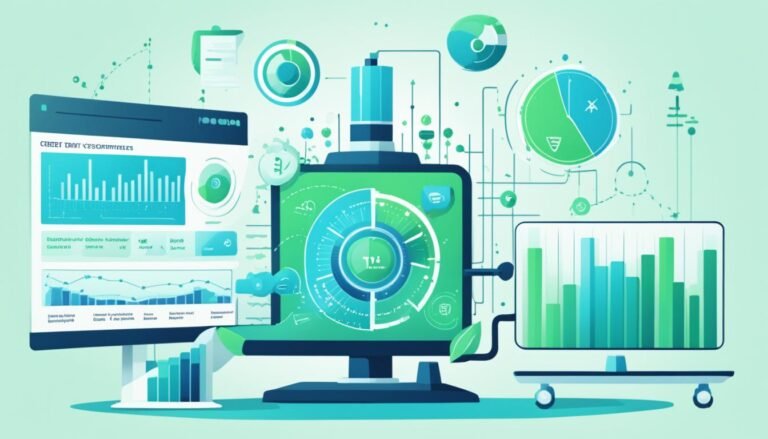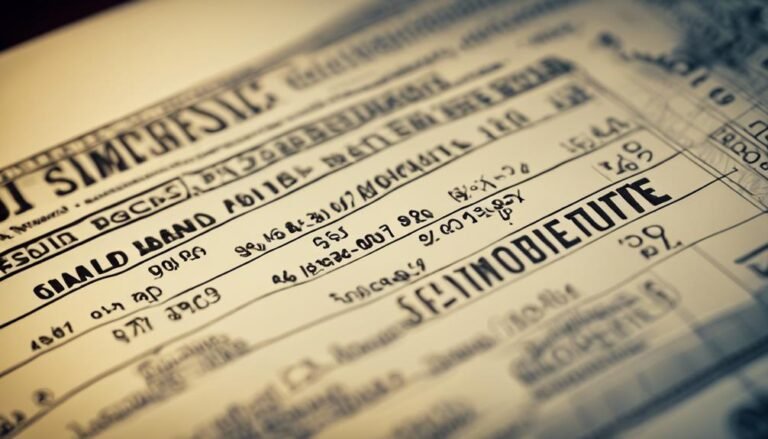Commodities Trading: An Essential Guide
Commodities trading involves analyzing raw material prices influenced by supply, demand, geopolitics, and economic indicators. Understanding agricultural and precious metal markets is essential for making informed trading decisions. Factors like geopolitical events and supply chain disruptions greatly impact commodity prices. Employing trading strategies like trend following and mean reversion helps traders capitalize on market trends. Effective risk management using diversification and hedging is paramount in mitigating trading risks. Technical tools like candlestick patterns and fundamental analysis aid in predicting price movements. Mastering trading psychology and regulatory knowledge are critical for success in commodities trading. A deeper look into these aspects will enhance your trading expertise.
Key Takeaways
- Understand commodity trends and market analysis for price predictions.
- Differentiate types of commodities like agricultural and precious metals.
- Consider factors like supply, demand, and geopolitical events in price analysis.
- Implement trading strategies such as trend following and mean reversion.
- Manage risks with diversification, stop-loss orders, and hedging instruments.
Understanding Commodities Trading
Commodities trading is a complex financial market where investors buy and sell raw materials or primary agricultural products. Understanding commodity trends and conducting market analysis are important aspects of moving successfully through this volatile market. Commodity trends refer to the direction in which the prices of various raw materials are moving over time. Market analysis involves studying supply and demand dynamics, geopolitical factors, weather patterns, and economic indicators that can impact commodity prices.
Analyzing commodity trends requires a deep understanding of global economic conditions, political events, and market sentiment. Investors often use technical analysis, fundamental analysis, and market sentiment analysis to predict future price movements. By examining historical price data and identifying patterns, traders can make informed decisions about when to buy or sell commodities.
Market analysis plays an essential role in commodities trading as it helps investors anticipate price fluctuations and manage risks effectively. Keeping abreast of market news, staying informed about government policies, and monitoring industry reports are essential practices for anyone involved in commodities trading.
Types of Commodities
A diverse array of raw materials and primary agricultural products make up the different types of commodities traded in the financial market. Agricultural commodities encompass a wide range of products such as wheat, corn, soybeans, coffee, sugar, and livestock. These commodities are heavily influenced by factors like weather conditions, global demand, and geopolitical events. Investors often trade agricultural commodities to diversify their portfolios and hedge against inflation.
On the other hand, precious metals like gold, silver, platinum, and palladium are also significant commodities in the trading world. They are known for their intrinsic value, use in jewelry, industrial applications, and as a store of value during economic uncertainty. Precious metals are often seen as safe-haven assets, with their prices influenced by factors such as geopolitical tensions, inflation rates, and currency fluctuations.
Understanding the various types of commodities is vital for traders looking to capitalize on market trends and make informed investment decisions. By monitoring supply and demand dynamics, geopolitical events, and economic indicators, traders can navigate the complexities of the commodities market effectively.
Factors Influencing Prices
Key factors that play a significant role in shaping commodity prices in the financial market include supply and demand dynamics. When the demand for a commodity surpasses its supply, prices typically rise due to competition among buyers. Conversely, oversupply can lead to price decreases as sellers seek to offload excess inventory.
Geopolitical events are also crucial in influencing commodity prices. Political instability, conflicts, or trade disputes in regions significant for commodity production or consumption can disrupt supply chains, causing price fluctuations. For instance, tensions in oil-producing regions may impact global crude oil prices.
Commodities traders must grasp these factors to effectively navigate the market. They not only need to monitor specific market conditions for the commodities they trade but also stay informed about geopolitical developments that could impact prices. By keeping up with these dynamics, traders can make more informed decisions when buying or selling commodities.
Popular Trading Strategies
Exploring a variety of trading strategies is essential for commodities traders seeking to optimize their investment decisions and navigate the dynamic financial market landscape effectively. Two popular trading strategies used in commodities trading are trend following and mean reversion.
Trend following strategies involve identifying and following the direction of a price trend. Traders using this approach aim to capitalize on the momentum of an asset's price movement, believing that the trend will continue in the same direction.
On the other hand, mean reversion strategies operate on the premise that prices will eventually revert to their historical averages. Traders using this strategy will buy assets that are priced below their intrinsic value and sell assets that are priced above their intrinsic value, anticipating a return to the mean.
| Trading Strategies | Description | Example |
|---|---|---|
| Trend Following | Identifying and following the direction of a price trend | Buying gold as its price continues to rise |
| Mean Reversion | Investing based on the assumption that prices will revert to their historical averages | Selling crude oil after a significant price spike |
Risks and Risk Management
Analyzing and mitigating risks is an essential aspect of commodities trading that requires a thorough understanding of market dynamics and strategic risk management techniques. Risk assessment plays an important role in identifying potential threats that could impact trading activities. Factors such as geopolitical events, supply chain disruptions, and market volatility can greatly influence commodity prices. Traders must conduct detailed risk assessments to evaluate the probability of these risks materializing and the potential impact they could have on their positions.
Effective risk mitigation strategies are necessary to protect against adverse market movements. Diversification of portfolios, setting stop-loss orders, and utilizing hedging instruments are common methods employed in commodities trading to manage risk exposure. By spreading investments across different commodities or asset classes, traders can reduce the impact of price fluctuations in any single market. Stop-loss orders help limit losses by automatically closing positions at predetermined levels. Additionally, hedging through futures contracts or options can provide protection against unfavorable price changes. Overall, a proactive approach to risk management is essential for successful commodities trading.
Choosing a Trading Platform
Risk management is fundamental in commodities trading, and the choice of a suitable trading platform can greatly impact a trader's ability to effectively implement risk mitigation strategies. When selecting a trading platform, it is fundamental to ponder various factors such as platform comparison, user experience, security measures, and customer support.
Platform comparison is vital to guarantee that the chosen platform aligns with the trader's needs and preferences. Traders should evaluate factors like trading tools, charting capabilities, order execution speed, and available markets before making a decision. Additionally, user experience plays a significant role in the efficient execution of trades. A user-friendly interface, seamless navigation, and customizable features can enhance a trader's overall experience.
Moreover, security measures are paramount to safeguarding sensitive financial information and preventing unauthorized access. A reliable trading platform should implement robust security protocols such as encryption and two-factor authentication. Finally, responsive customer support is essential for addressing any technical issues or inquiries promptly. Traders should opt for platforms that offer responsive customer service through multiple channels to ensure a smooth trading experience.
Technical Analysis Tools
Utilizing technical analysis tools in commodities trading allows traders to analyze historical price data and identify potential trends and patterns for informed decision-making. These tools provide valuable insights into market behavior and can aid in predicting future price movements.
Here are four key technical analysis tools commonly used in commodities trading:
- Candlestick patterns: Candlestick charts display price movements over a specific period, helping traders identify patterns that indicate potential reversals or continuation of trends.
- Trendlines: Trendlines are used to connect consecutive highs or lows in a price chart, highlighting the direction of the market trend. They assist traders in making decisions based on the prevailing market sentiment.
- Fibonacci retracement: Fibonacci retracement levels are horizontal lines that indicate potential support and resistance levels based on the Fibonacci sequence. Traders use these levels to anticipate price corrections in the market.
- Moving averages: Moving averages smooth out price data to identify trends over a specified period. They help traders confirm the direction of the trend and potential entry or exit points in the market.
Fundamental Analysis in Trading
Understanding the underlying factors that drive the prices of commodities is essential in fundamental analysis for making informed trading decisions. Fundamental analysis in commodities trading involves evaluating supply and demand dynamics along with various economic indicators to assess the intrinsic value of a commodity.
Supply and demand play a vital role in determining commodity prices. Factors like geopolitical events, weather conditions, and government policies can impact the supply side, while changes in consumer preferences and economic growth influence demand. Economic indicators such as GDP growth, inflation rates, and employment figures provide valuable insights into the overall health of an economy, affecting commodity prices.
Trading Psychology Tips
To optimize trading performance and make well-informed decisions in commodities trading, understanding and managing trading psychology is essential. Trader psychology plays a vital role in maneuvering the complexities of the market.
Here are four essential tips to enhance mindset mastery and emotional discipline:
- Self-awareness: Recognize your strengths, weaknesses, and biases to make more rational decisions.
- Risk management: Implement strict risk controls to protect your capital and reduce emotional stress during volatile market conditions.
- Continuous learning: Stay updated on market trends, trading strategies, and psychological techniques to improve mental resilience.
- Emotional regulation: Develop coping mechanisms to handle stress, fear, and greed, which are common emotions that can cloud judgment.
Regulatory Environment
The regulatory environment in commodities trading is a critical aspect that traders must navigate effectively. Understanding the roles of regulatory bodies, such as the CFTC and SEC, is essential for compliance and risk management.
Compliance requirements play a significant role in shaping how commodities markets operate and the behavior of market participants.
Regulatory Bodies Overview
In the domain of commodities trading, a critical aspect that shapes the industry landscape is the presence and influence of various regulatory bodies.
- Regulatory bodies comparison: Different countries have distinct regulatory bodies overseeing commodities trading, such as the CFTC in the U.S. and the FCA in the UK.
- Compliance challenges: Market participants encounter hurdles in adhering to varying regulatory standards across jurisdictions.
- Enforcement mechanisms: Regulatory bodies employ enforcement tools like fines and penalties to guarantee compliance.
- Impact on market stability: Stringent regulations by these bodies aim to uphold market integrity and protect investors.
Compliance Requirements Explained
Traversing the intricate maze of compliance requirements within the regulatory environment of commodities trading demands careful attention to detail and a profound understanding of the evolving landscape. Staying abreast of regulatory updates is essential to guarantee adherence to the rules governing commodities trading. Below is a compliance checklist to assist traders in maneuvering this complex terrain:
| Compliance Checklist | Description |
|---|---|
| Regulatory Licensing | Obtain necessary permits |
| Trade Reporting | Submit precise reports |
| Risk Management Policies | Implement strong policies |
| Internal Controls | Establish efficient controls |
| Recordkeeping Procedures | Maintain detailed documentation |
Impact of Regulations
Traversing the intricate regulatory environment of commodities trading necessitates a sharp understanding of the impact regulations have on market dynamics and participant behavior.
- Regulatory challenges: Compliance with varying regulatory requirements across different jurisdictions can be complex and costly.
- Market implications: Regulations can influence market liquidity, price volatility, and overall market stability.
- Participant behavior: Regulatory changes can prompt shifts in trading strategies and risk management practices.
- Enforcement: Strict upholding of regulations guarantees market integrity and protects investors from fraudulent activities.
Conclusion
In the vast market of commodities trading, maneuvering through the various factors influencing prices and implementing effective strategies is akin to sailing a ship through unpredictable waters. Understanding the types of commodities, risks involved, and utilizing technical and fundamental analysis tools are essential for success.
Just as a skilled captain steers a ship towards its destination, traders must traverse the volatile seas of commodities trading with caution and precision to achieve their financial goals.








